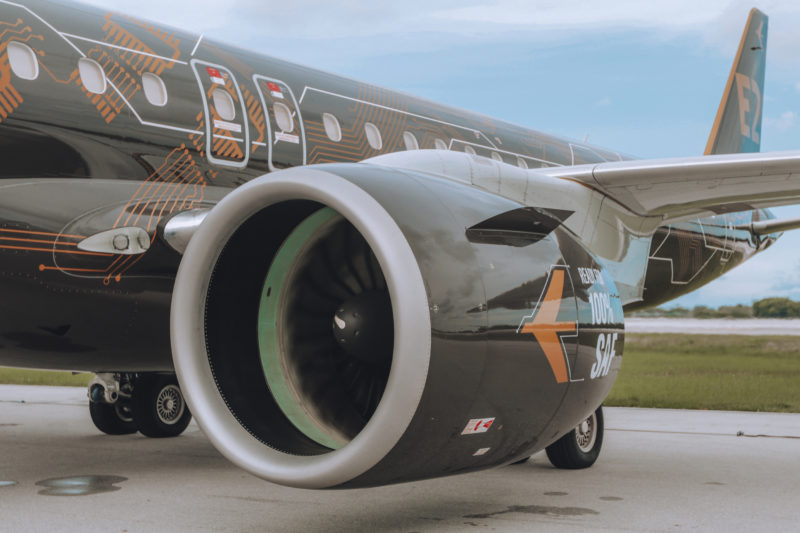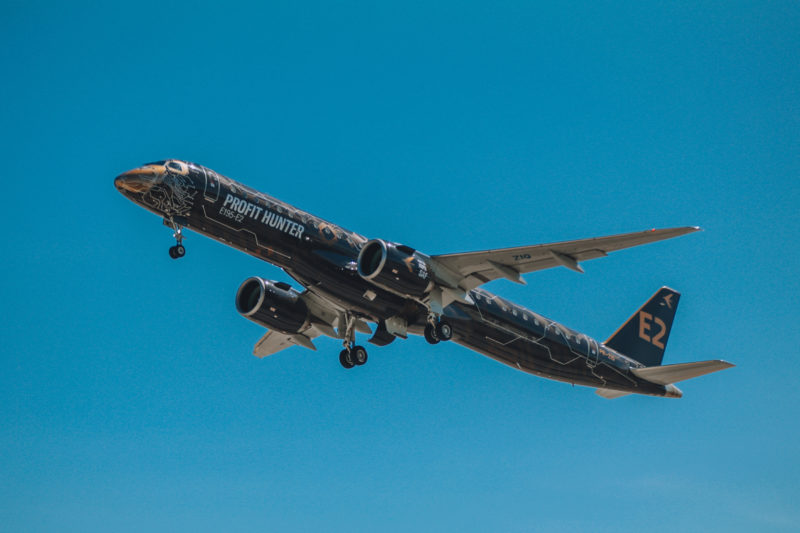The move to use Sustainable Air Fuel (SAF) continues with Embraer and Pratt & Whitney having successfully tested a GTF (Geared Turbo Fan)-powered E195-E2 aircraft on 100% sustainable aviation fuel (SAF).

The test, with one engine running on 100% SAF, validated that GTF engines and the E-Jets E2 family can fly on both engines with blends of up to 100% SAF without any compromise to safety or performance was conducted on the 30th of June.

The aircraft completed two days of ground tests at Fort Lauderdale International Airport, culminating in a 70-minute flight test at Vero Beach Regional Airport in Florida.
All Pratt & Whitney engines and Embraer aircraft are currently certified to operate with SAF blended up to 50% with standard Jet A/A1 kerosene, according to ASTM International specifications. Future specifications will enable blends of up to 100% SAF to maximize the emissions reduction potential of using fuel derived from sustainable, non-fossil-based feedstocks.
In Quotes
Rodrigo Silva e Souza, Vice President of Strategy and Sustainability, Embraer Commercial Aviation said:
“The E2 is already the most efficient single aisle aircraft flying today, saving up to 25% CO2 emissions compared to previous generation aircraft. This reduction in emissions can be increased up to an impressive 85% with 100% SAF. Replacement of older aircraft by new generation products and scaling up SAF production are the two most effective actions commercial aviation can take now to achieve a significant reduction in emissions,” said
“Embraer and Pratt & Whitney are leading the industry with products that are more efficient for our customers and more sustainable for our society. This test demonstrates that the E2 is ready for 100% SAF certification and operation once the industry finalizes standards.”
Graham Webb, chief sustainability officer at Pratt & Whitney said :
“SAF is a core part of our sustainability road map, and we continue to work with industry partners and regulators to support the development of a drop-in standard for 100% SAF,”
“This test proves that GTF engines can operate on any fuel, and that the E-Jets E2 family is ready for 100% SAF certification once the industry finalizes the standard for unblended SAF.”
The fuel
The SAF used by Embraer and Pratt & Whitney was 100% Hydroprocessed Esters and Fatty Acids Synthetic Paraffinic Kerosine (HEFA-SPK) acquired from World Energy. HEFA-SPK is a specific type of hydrotreated renewable feedstock fuel used in aviation and is considered a leading alternative replacement for conventional jet fuel by the Commercial Aviation Alternative Fuels Initiative (CAAFI), due to the sustainability of its feedstock.
Now… more SAF

With engine and airframe compatibility being more of a thing, SAF is living up to the dream of it being the replacement of Kerosene.
However, if you’ve read the blog more than once recently when I’ve covered SAF, you know what’s coming up – a distinct lack of supply of SAF at the moment.
With SAF estimated to make up between 9.5% and 31.5% of the target to make up the magic net zero the industry is targeting by 2050, SAF suppliers are going to have to step up from the current puddles of fuel and scale up production.
And that’s the real challenge. Currently, Neste (a supplier of SAF is looking to produce 1.5Million Gallons of fuel in 2023, to be used either neat or as a blend. That compares with the 95 billion gallons used in 2019.
SAF is going to be key to the delivery of the lower-carbon aviation industry – but there are going to have to be some serious discussions about how this is scaled up.
Welcome to Economy Class and Beyond – Your no-nonsense guide to network news, honest reviews, featuring in-depth coverage, unique research, as well as the humour and madness I only know how to deliver.
Follow me on Twitter at @EconomyBeyond for the latest updates! You can follow me on Instagram too!
Also remember that we are part of the BoardingArea community, bringing you the latest frequent flyer news from around the world.